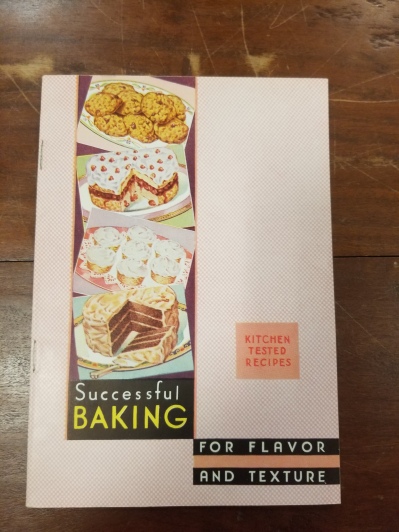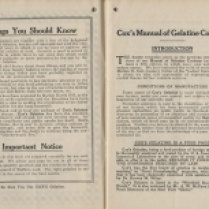Let’s start this post off honestly: I don’t know much about Martha Lee Anderson. In fact, I don’t even know if she was even a real person. However, I believe she was, since unlike the legendary Betty Crocker, her name appears in her some of publications as attributed to her as part of the Research Test Kitchen of Church & Dwight Co., Inc. So, while we can’t talk about her in detail, we can certainly see her handiwork.
Martha Lee Anderson authored or edited a LOT of pamphlets while in the employ of Church & Dwight Co., Inc. You might know this company best for a little product called Arm & Hammer baking powder? You can cook or bake with it, as well as clean you home and yourself with it! Quite a versatile product! Anderson’s pamphlets focused more on the eating part, usually compiling recipes for baked goods, though sometimes venturing into more savory dishes. “Chicken Shortcake” led to some interesting expressions when I shared it with colleagues while preparing this post. It’s not generally two words you expect to see together–but its basis is formed by baking soda biscuits!
You might notice a certain trend among the pamphlets attributed to her. Many of them share the same name: “Good Things to Eat” or “Successful Baking for Flavor and Texture,” for example. Historically speaking, many of these pamphlets went through multiple editions. When I pulled the folder from the Culinary Pamphlet Collection relating to Church & Dwight Co., Inc., I found edition number 115 of “Good Things to Eat,” published in 1936. Since the company was established in 1846, that means each year had more than one edition produced. Martha Lee Anderson was responsible, it seems for at least 18 years of them, too. The earliest item in our collection I found with her name was from 1931 and the latest was 1949. It’s possible (and likely) her tenure extended beyond this, but at the moment, we don’t have any particular items after 1949 or anything before 1931 with a name on it.
While details on her identity may be limited today, her prolific culinary pamphleteering, as it were, likely made her name more recognizable in her own time. Most of these were little publications that would have been given away for free to could be acquired for a small fee. Between the four items we have cataloged and the Culinary Pamphlet Collection, we have more than 20 pamphlets from Church & Dwight, about a dozen of which are editions authored by Anderson. The pictures above are just a sampling and even among those, you can seem some variations in covers, recipes, and style. So, if you’d like to learn more about Martha’s recipes, you’re welcome to stop by and see them in person. You might find some inspiration for some cookies, a cake, or even, if you’re feeling bold, Chicken Shortcake!









































































